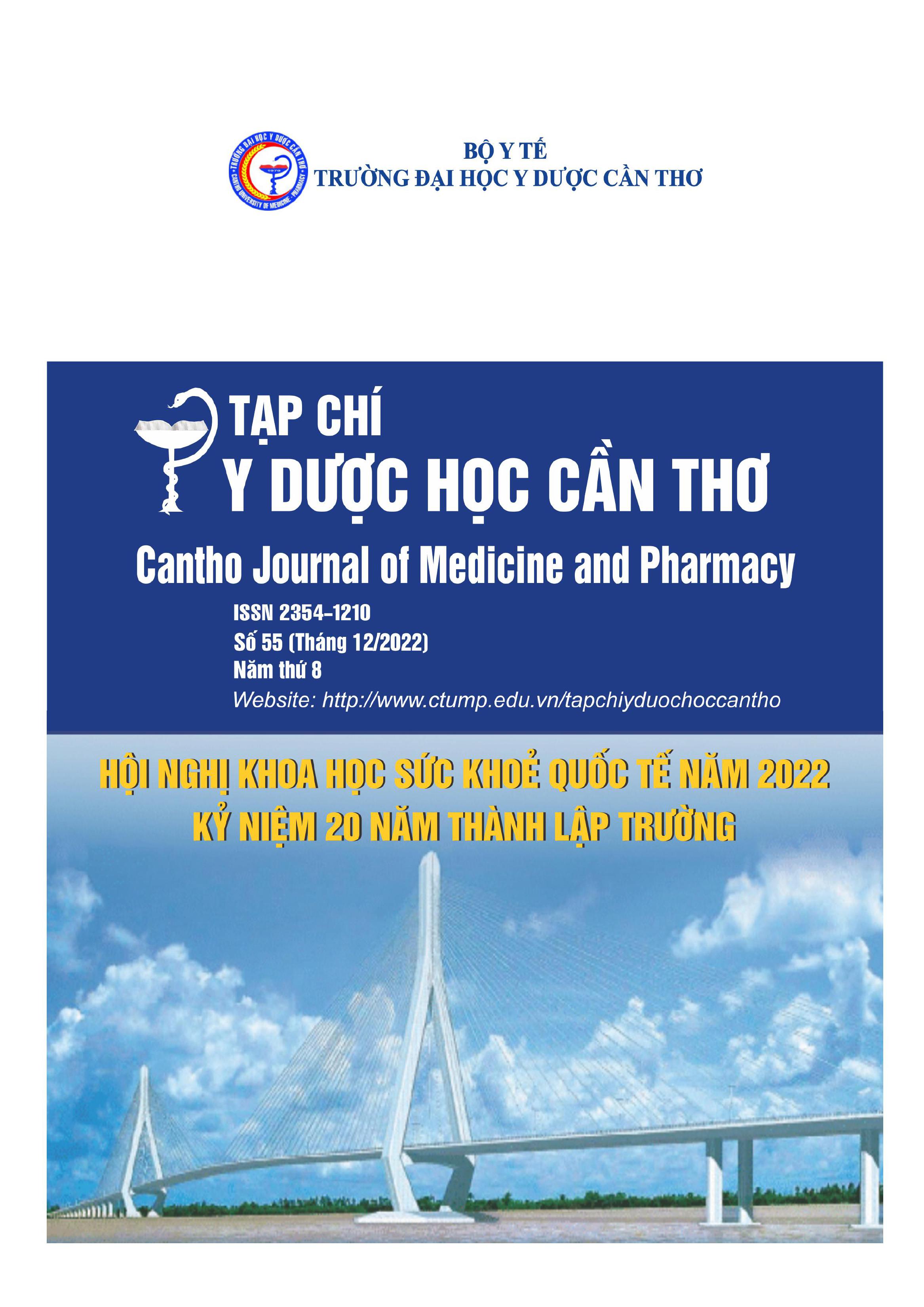SLEEP QUALITY AND ASSOCIATED FACTORS OF STUDENTS IN THE FACULTY OF NURSING AND MEDICAL TECHNOLOGY, UNIVERSITY OF MEDICINE AND PHARMACY AT HO CHI MINH CITY
Main Article Content
Abstract
Background: Sleep quality is a mindful issue in students, especially medical students with a high rate of sleep disorders. Objective: The research investigated the prevalence of sleep disorders among students of the Faculty of Nursing – Medical Technology, University of Medicine and Pharmacy at Ho Chi Minh City, and identified factors related to sleep quality. Materials and methods: 367 students, who met the criteria for sample selection, were recruited in this cross- sectional, descriptive study. The questionnaire was built from the Pittsburgh Sleep Quality Scale - PSQI, the Depression - anxiety - stress scale DASS 21, and questions related to demographic characteristics and influencing factors. Results: The percentage of sleep disorders among students was 53.4%. Light and noise in the bedroom, using mobile devices before sleeping, pathological pain, and psychological factors (anxiety, stress, and depression) had a statistically significant relationship with sleep quality with p ≤ 0.05. Conclusion: Sleep disorders accounted for a high proportion of students of the Faculty of Nursing - Medical Technology. Research also found a relationship between psychological factors and sleep quality. Supportive interventions like psychological support are instantly necessary to improve sleep quality for students, thereby helping students have a better quality of life.
Article Details
Keywords
Sleep quality, PSQI, nursing students, stress
References
2. Nguyễn Tấn Phước, Dương Minh Hằng, Mai Phương Thảo (2020), "Mối liên quan giữa chất lượng giấc ngủ và kết quả học tập của sinh viên y đa khoa năm 6 ", Tạp chí y học TPHCM, 24 (2), tr.114-119.
3. Trần Ngọc Trúc Quỳnh (2016), "Chất lượng giấc ngủ và các yếu tố liên quan của sinh viên khoa Y học Dự phòng, Đại học Y Dược Thành phố Hồ Chí Minh", Tạp chí Y học TPHCM, 20, tr.261-267.
4. Al Salmani A.A, Al Shidhani A, Al Qassabi S. S, et al. (2020), "Prevalence of sleep disorders among university students and its impact on academic performance", International Journal of Adolescence and Youth, 25 (1), pp.974-981.
5. Altun I, Cınar N, Dede C (2012),"The contributing factors to poor sleep experiences in according to the university students: A cross-sectional study", J Res Med Sci, 17 (6), pp.557-61.
6. Aung K (2016), "Sleep Quality and Academic Performance of Nursing Students", IOSR Journal of Nursing and Health Science (IOSR-JNHS), 5, pp.145-149.
7. Azad M C, Fraser K, Rumana N, et al. (2015), "Sleep disturbances among medical students: a global perspective", J Clin Sleep Med, 11 (1), pp.69-74.
8. Bano M, Chiaromanni F, Corrias M, et al. (2014), "The influence of environmental factors on sleep quality in hospitalized medical patients", Front Neurol, 5, pp.267.
9. Bhat S, Chokroverty S (2021), "Sleep disorders and COVID-19", Sleep Med.
10. El Sayed S, Gomaa S, Shokry D, et al. (2021), "Sleep in post-COVID-19 recovery period and its impact on different domains of quality of life", Egypt J Neurol Psychiatr Neurosurg, 57(1), pp.172.
11. Exelmans L, Van den Bulck J (2016), "Bedtime mobile phone use and sleep in adults", Soc Sci Med, 148, pp. 93-101.
12. Lovibond SH, (1995), "Manual for the depression anxiety stress scales", Psychology Foundation of Australia Sydney.
13. Menon B, Karishma H P, Mamatha IV(2015), "Sleep quality and health complaints among nursing students", Ann Indian Acad Neurol, 18 (3), pp. 363-4.
14. Meng Q, Zhang J, Kang J, et al. (2020), "Effects of sound environment on the sleep of college students in China", Sci Total Environ, 705, pp. 135794.
15. Shechter A, Kim E W, St-Onge M P, et al. (2018), "Blocking nocturnal blue light for insomnia: A randomized controlled trial", J Psychiatr Res, 96, pp. 196-202.


